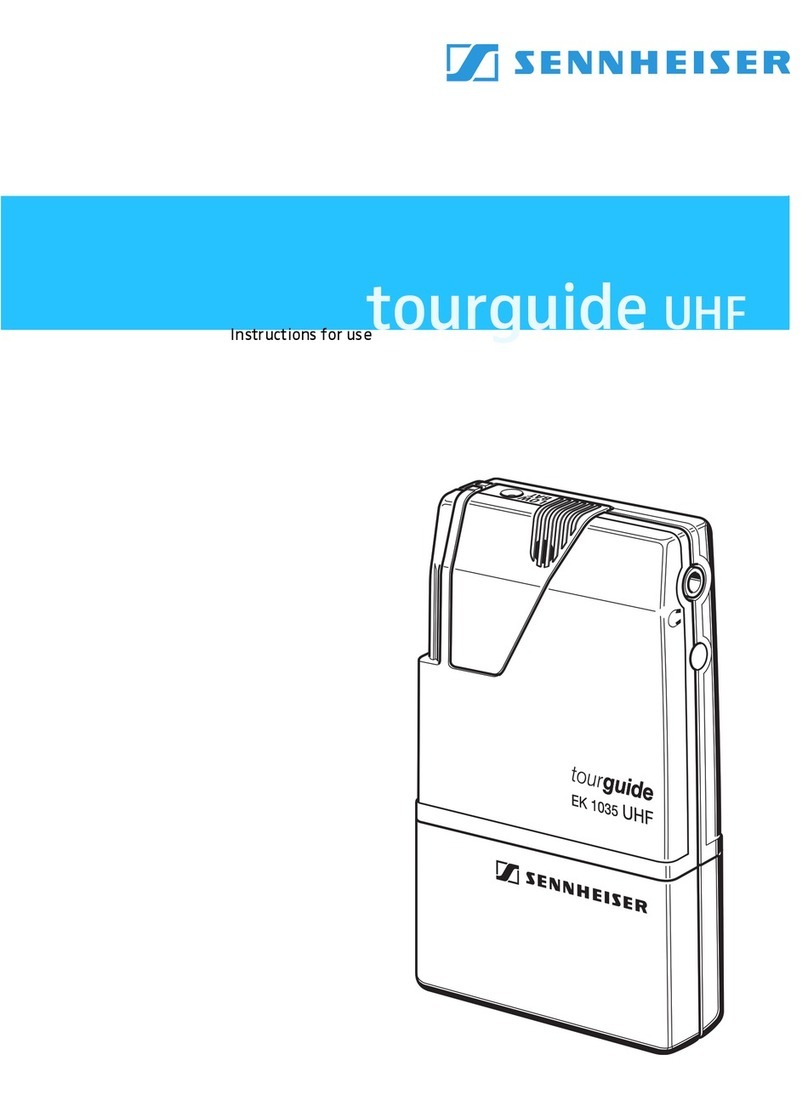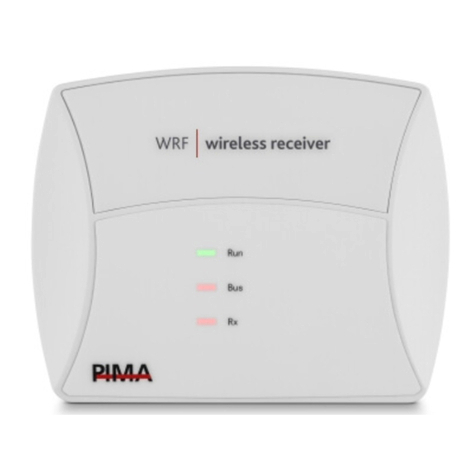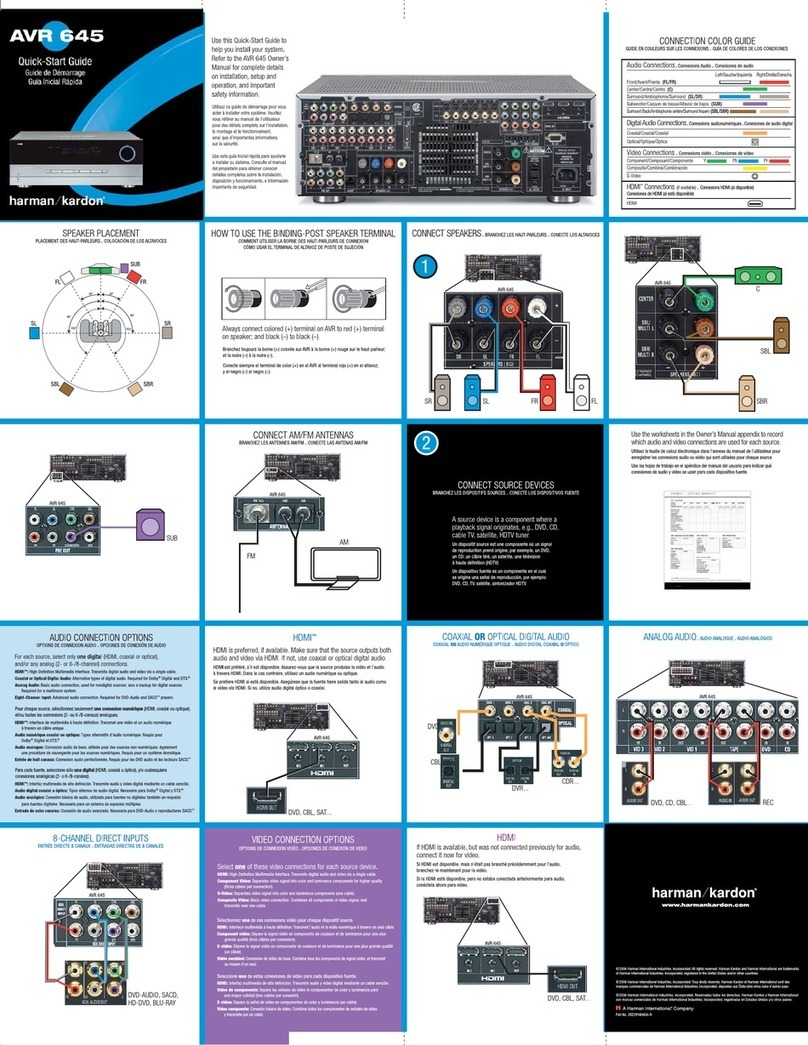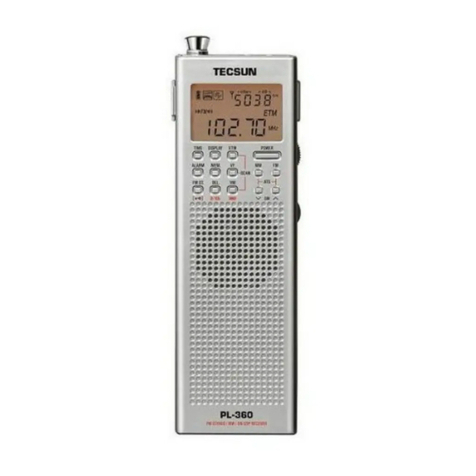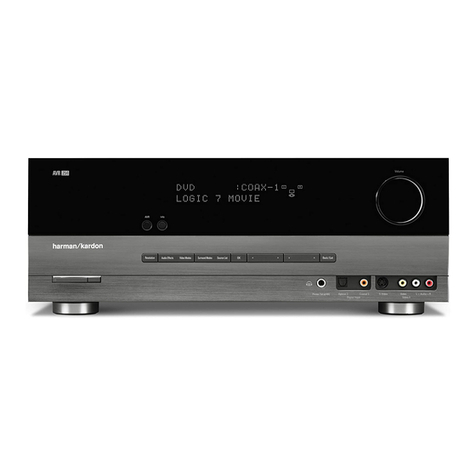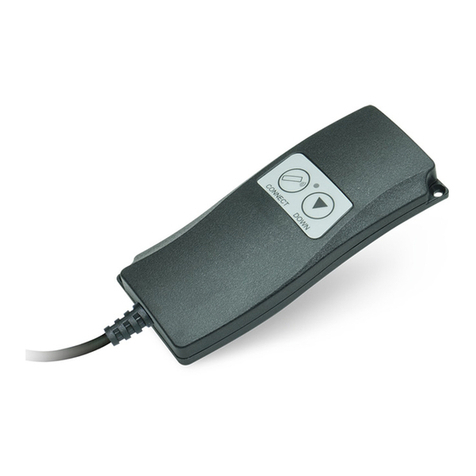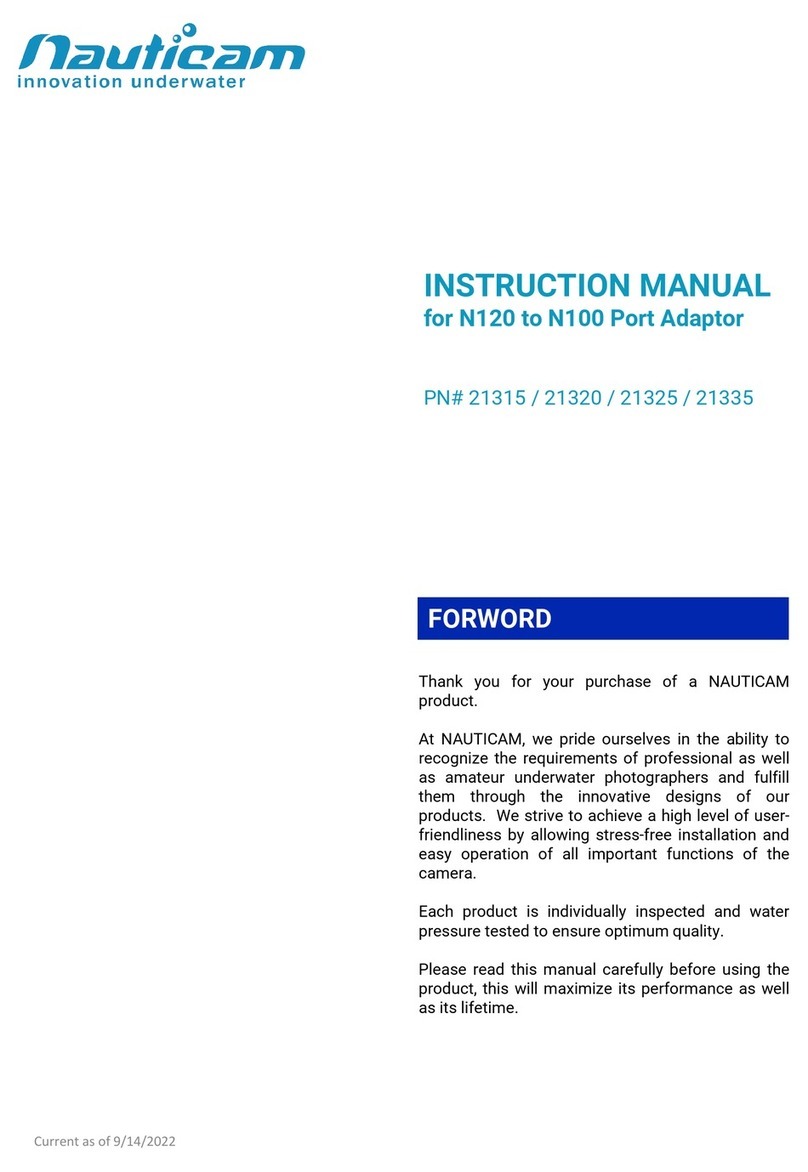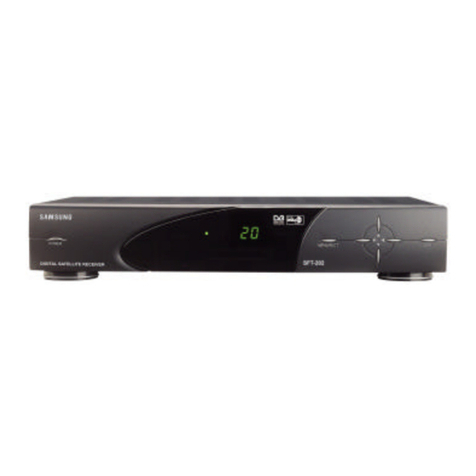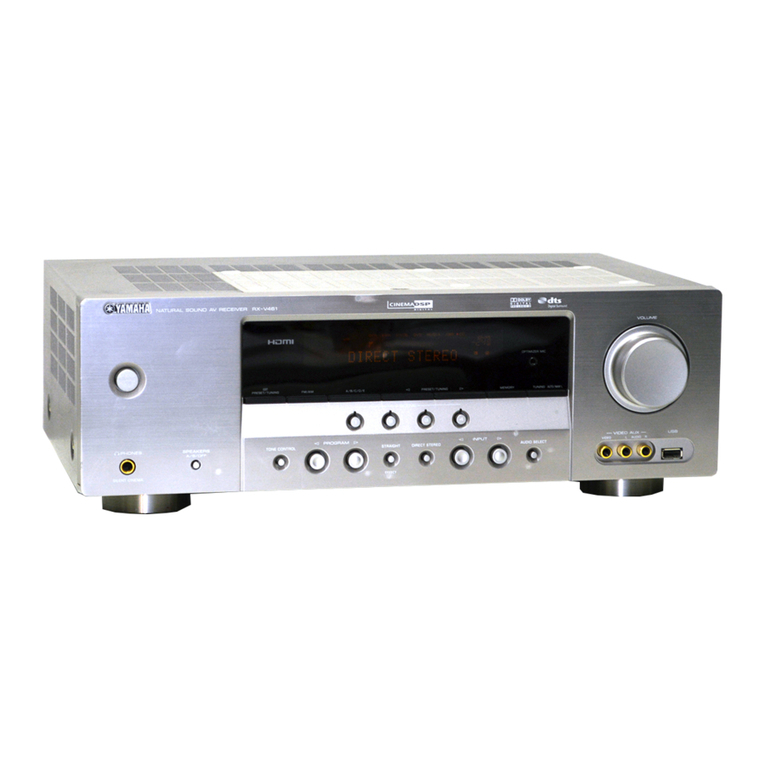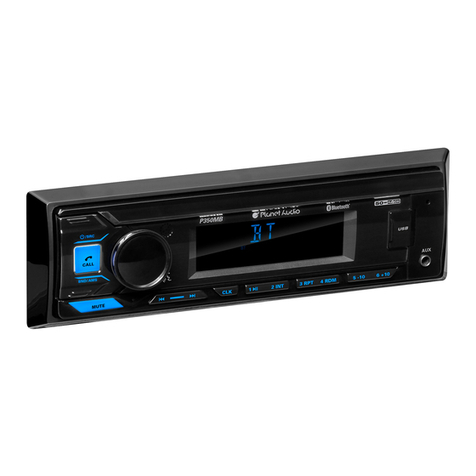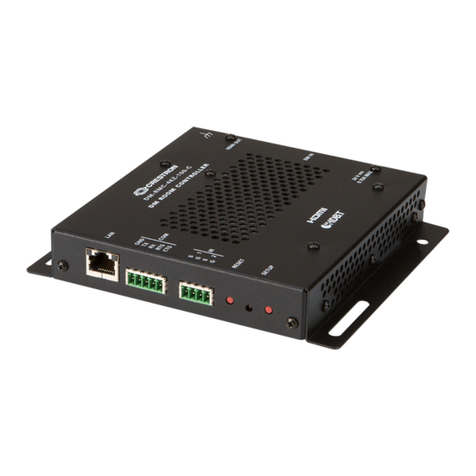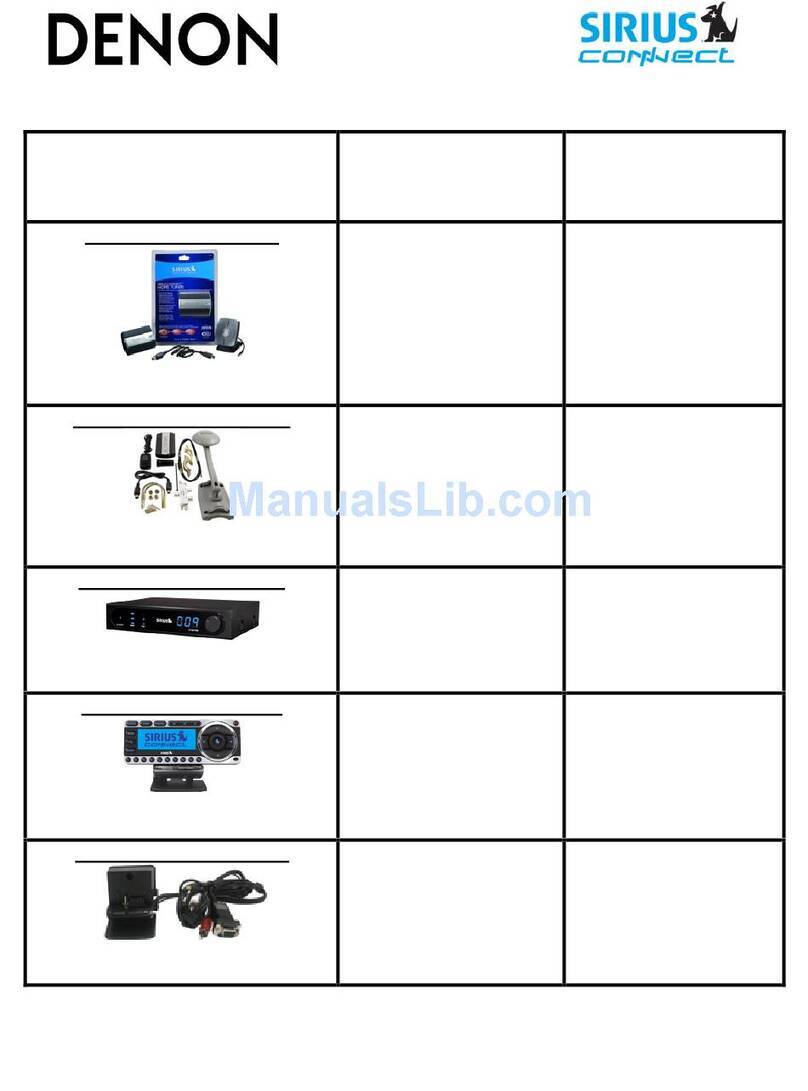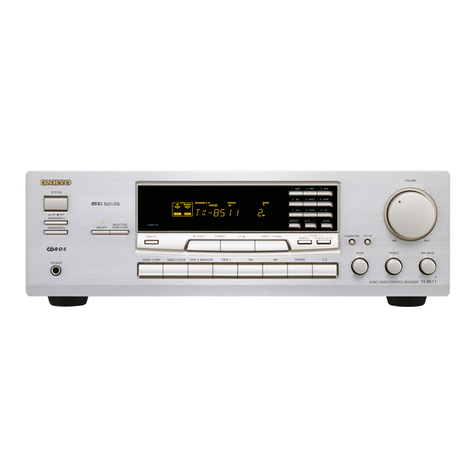Indelec StorMonitor Guide

StorMonitor - Installation & commisionning - V2009.01 GB.doc – V2009.01 1
StorMonitor
Installation and commissioning manual

StorMonitor - Installation & commisionning - V2009.01 GB.doc – V2009.01 2
CONTENTS
I - GENERAL REMARKS ………………………………………………………………………………………….3
II - INSTALLATION AND COMMISSIONING ………….…………………………………….................………4
II-1 Installing the StorMonitor main unit..…………………............……………………………….4
II-2 Installing the antenna ……………………………………….........……………….……………4
II-3 Finding a position to site the antenna …………………………......................……….……..5
III – LIMITATIONS TO USE ……………………………………………...........…………………………………..5
IV – CONNECTION PRINCIPLES ………………………………………................……………………………..6

StorMonitor - Installation & commisionning - V2009.01 GB.doc – V2009.01 3
I - General remarks:
The StorMonitor system comprises the following units:
A metallic box
1
containing the processing electronics with a display showing storm
activity via a set of LEDs and a bar graph.
A reception antenna
9
fixed outside the building and connected to the processing unit via
a shielded cable.
A 230Vac/12Vdc power supply connected to the box via a jack plug.
The StorMonitor system is designed to be installed on a desk, or equivalent, inside a building.
1StorMonitor main unit : H:40 / L:214 / D: 133 (mm)
2a Top left LED: Lightning strike
2b Top right LED: Storm in progress
2c Bottom left LED: Power on
2d Bottom right LED: Storm memory
3DANGER LED (reset at the same time as the storm memory LED)
4Bar graph indicating the level of storm activity
5Reset Memory button to acknowledge the storm memory
65 mm Jack socket for StorMonitor power supply
7Female 9-pin Sub-D socket for connecting the antenna
8Male 9-pin Sub-D socket for information output
9Antenna
230Vac/12Vdc power supply transformer
11
Counter for the number of storms
12
Earth connector (see appendix 1)
11
12
9
3
2
b
2
a
1
5
2
d
2
c
6
8
7
4

StorMonitor - Installation & commisionning - V2009.01 GB.doc – V2009.01 4
II - Installation and commissioning:
II-1 Installing the StorMonitor main unit:
The antenna is supplied with a 25 meters long cable. If necessary the cable can be extended
(follow the instructions in appendix 2 ; please pay an extreme attention to the electrical
continuity of the cable screening).
The StorMonitor main unit must not be installed close to a source of electrical interference
which may prevent it operating properly.
Connect the power supply unit to the mains, then connect its male Jack to the female socket
6on the back of the StorMonitor main unit : check that the green "POWER" LED 2c on the
processing unit is on.
II-2 Installing the antenna:
The environmental conditions existing during installation have a strong influence on the
choice of geographical location of the antenna; any later changes to them may affect the
system's behaviour, demonstrated by excessive, or a decrease in detection sensitivity; the
nature of the ambient air at the time of installation (according to its degree of ionization) may
make the system more or less sensitive; it is in this way that in certain circumstances, very dry
air can increase sensitivity. It is essential therefore to check sensitivity and the environment
regularly.
Electrical environment:
Ideally the antenna should be in a location without any source of electrical interference like an
electric motor, neon or discharge tube, telephone, loud speaker, in a radius of at least ten
metres around it. It may happen that certain electrical phenomena that cause interference do
not occur during installation, but after a time, randomly or periodically, every 24 hours and at
a set time for example; in this case, the origin must be identified so that the cause can be
eliminated or, if this is impossible, the location of the antenna changed.
External environment:
The antenna should be fixed to an elevated point of the area to be monitored. Generally
speaking, it is recommended :
- not to install it behind a metal surface (corrugated iron for example), close to a metal
beam or framework or metal points that could act as a screen.
- to make sure that the cable connecting it to the main box does not pass close to a
power cable or any cable likely to emit radiation, a loud speaker cable, intermittent
power supply or dimmer, etc.
- to never install it inside a building that could create a Faraday cage and thus inhibit the
electromagnetic waves caused by storm activity and normally sensed by the antenna.

StorMonitor - Installation & commisionning - V2009.01 GB.doc – V2009.01 5
II-3 Finding a position to site the antenna:
The choice of location for the antenna should be made during good weather and without any
threat of storm activity, even far away.
Once the area of location has been determined in the light of the preceding criteria, the precise
choice in this area should be determined actively, that is to say, with the antenna connected to
the box itself with the power switched on.
In these conditions, with the antenna held manually, find the optimal location by watching the
bar graph on the processing unit: this should always remain inactive; if the first LED located
at the bottom left of the bar graph comes on and there is no storm activity on the horizon, this
means that there is a source of electrical interference close to the antenna; eliminate this
interference or find another location for the antenna.
Once the choice of location has been finally determined, fix the antenna in its final position in
accordance with the instructions in appendix 3.
Then check that the bar graph remains inactive.
III - Limitations to use:
The StorMonitor sensitivity is optimal for negative lightning surges which are a succession of
discharges. Its operation is linked to the degree of dynamic activity of the storm manifestation
present in the geographical area close to the antenna.
Note:
1- Lightning activity in the sky may not be detected by the StorMonitor; in fact, everything
depends on the distance separating it from the antenna. As an indication, lightning can be seen
with the naked eye up to a distance of 90 km, therefore well beyond the antenna's sensing
range.
2- The sound of thunder is always associated with a flash of lightning, even if you do not see
it. Thus it is possible that even when there is a clap of thunder, the device does not detect it: in
fact, the noise of thunder can extend for up to 30 km, therefore well beyond the antenna's
detection distance.

StorMonitor - Installation & commisionning - V2009.01 GB.doc – V2009.01 6
IV – Connection principles:
Diagram (see appendix 2 for more details):
Main technical data:
Power supply: 12Vdc typical, range from 11 to 13.6Vdc
Consumption at 12V (without alarm): 90 mA
Operating temperature range: -15 to + 60 °C
Antenna protection index: IP66
Sound alarm signal: via a buzzer incorporated into the processing unit, depending on the
position of the jumper SW12 located on the processing unit's circuit board.
Reset of the buzzer and "Memory" LED 2d by a pressing the “Reset memory” button 5on
the front panel.
Timeout of the "Storm in progress" alarm: 10 minutes, retriggerable by lightning occurring
during this timeout.
Alarm contact: NO, no voltage, rating 24Vdc/1A on resistive load.
For further details concerning use, please refer to appendices 1, 2 and 3.
END OF DOCUMENT
Antenna
Processing unit
J1 J2
Power supply unit
Buzzer, alarm, etc.
2
3
+12V
230 Vac
Yellow / green wire
0 V
Exam
ple of output interface

0 0 0 0 1 2
Dangerous thunderstorms counter Bargraph indicating
the level of storm activity
Reset storm memory
LED visualization
1 2
3 4
5
LED number Function
1 Lightning strike detection
2 Storm occuring
3 Power on
4 Storm memory
5 Dangerous thunderstrom
Front panel of the processing unit :
Rear panel of the processing unit :
5mm Jack socket
power supply 12Vdc
J2- male 9-pin SubD socket
for information output J1- female 9-pin SubD socket
for antena connection
Appendix 1 - StorMonitor main unit description
Earthing
1 2 5
6 10
Progress of the display by successive
ignitioneof LEDs (from 1 to 10)

Antenna
SubD connector
Antenna
J1 SubD
connector
(1) White
(2) Green
(3) Brown
(4)
Shield (metal braid)
Appendix 2 - Adapting the antenna's cable length
1 - Antenna with its cable ended by a 9-pin SubD male connector :
2 - Insertion of transition connector blocks to increase or decrease the cable's length :
(1) +DC power supply, white
(2) Antenna's output signal, green
(3) 0V DC power supply, brown
(4) Metal braid
Transition connector block
Antenna
Distribution boxes including
the connector block (*)
Cable gland
(*) Plexo-type box or equivalent, not supplied.
Cable ref. : H1-FLEX.CY 4x0.34 soft
Processing
unit
Antenna's cable connected to
J1 SubD male connector
Cable length = 25 meters
J2 SubD
connector
(customer's interface)
UNITE DE
TRAITEMENT
Conductors into the
antenna's cable
1
2
4
3
5
+
J1
J2
Female connector
Braid
3 - Example of installation:
(1)
(2)
(3)
(4)
(1)
(2)
(3)
(4)
(1)
(2)
(3)
(4)
(1)
(2)
(3)
(4)
Extension cable
(see hereunder)
Processing unit
2
3
J2's pins# 2 and 3: potential free NO contactor (factory settings)
+12Vdc
0Vdc
Example of connection of an external alarm

Appendix 3 - Fastening the antenna
Galvanized steel tube, ext. diam.: 30mm
U-shapped steel fixing
Nut
1 - Fixing on a steel tube :
Cable gland for antenna's cable
Fastening - top view
Fastening - cross-section
Antenna
2 - Fixing with bracket :
l = 175mm
h = 100mm
Nut for antenna fixing
Antennafixed
with a bracket
Hole for bracket fixing
Fastening - side view
Antenna's cable
Mast fixed to the building
Metal plate for strenghtening
Be sure that the antenna is always fixed in one of both shown positions.
Table of contents
